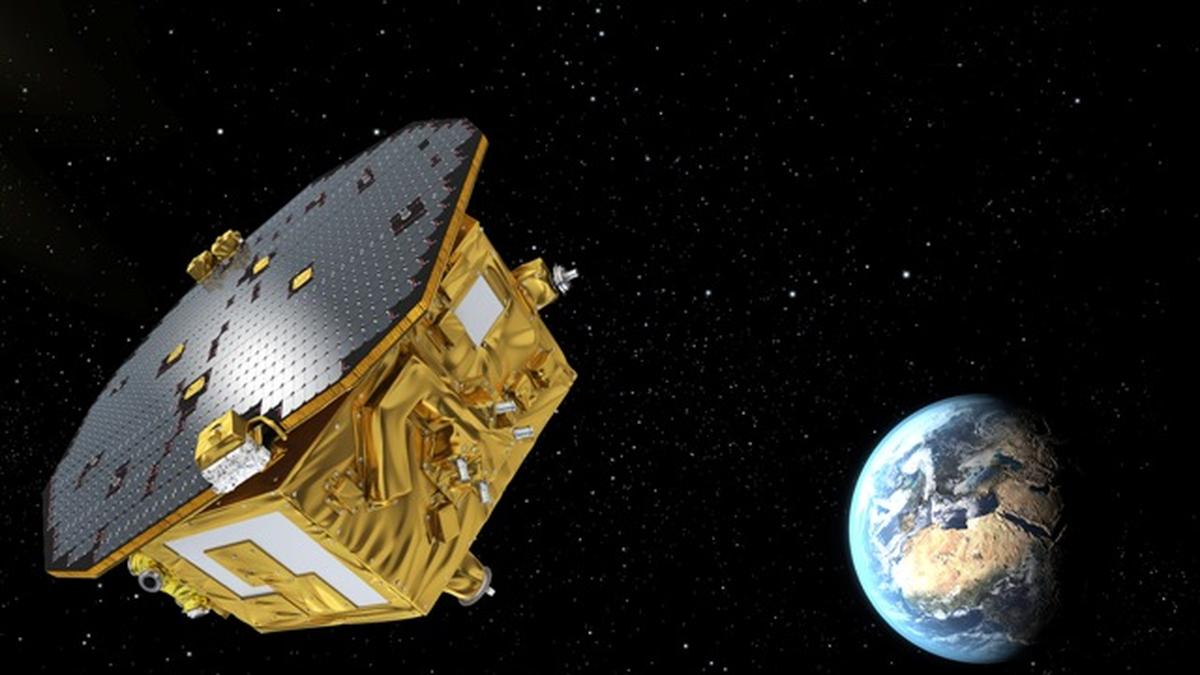Laser Interferometer Space Antenna (LISA) Mission

- 26 Oct 2025
In News:
The Laser Interferometer Space Antenna (LISA) is a joint mission of the European Space Agency (ESA) and NASA, scheduled for launch in the mid-2030s. It represents the first-ever space-based observatory designed to detect gravitational waves, offering an unprecedented opportunity to study some of the most energetic and mysterious phenomena in the universe.
Mission Objective
LISA aims to:
- Directly detect and study gravitational waves—minute ripples in spacetime caused by massive cosmic events such as black hole mergers, neutron star collisions, and possibly phenomena from the early universe.
- Explore the fundamental nature of gravity and black holes, providing insights into Einstein’s General Theory of Relativity.
- Investigate cosmic evolution by probing how galaxies and black holes have grown and interacted over time.
- Contribute to understanding the universe’s expansion rate, complementing other cosmological observations.
Design and Configuration
- The LISA system will consist of three identical spacecraft, positioned in an equilateral triangular formation.
- Each side of this triangle will span approximately 2.5 million kilometres, and the formation will trail Earth in its orbit around the Sun at a distance of about 50 million kilometres.
- This configuration will enable ultra-precise measurements of tiny variations in distance between the spacecraft caused by passing gravitational waves.
Scientific Principle
- Each spacecraft will contain two free-floating test masses (gold-platinum cubes) that serve as nearly perfect reference points in space.
- Laser beams exchanged between the spacecraft will measure the relative distance between these cubes with extraordinary accuracy using laser interferometry.
- As gravitational waves pass through, they will slightly alter the distances between the spacecraft—by as little as a fraction of the width of an atom—allowing LISA to record and analyse these distortions.
Technological Significance
- LISA extends the capabilities of ground-based detectors like LIGO and VIRGO, which can only detect higher-frequency gravitational waves.
- By operating in space, LISA can sense low-frequency gravitational waves generated by supermassive black hole binaries and other massive cosmic systems, which are beyond the reach of terrestrial observatories.
- The mission will also test cutting-edge technologies in laser stability, drag-free navigation, and precision metrology.
Scientific Impact
- Enhance understanding of black hole dynamics, galaxy formation, and cosmic structure evolution.
- Provide new data on extreme astrophysical events and test the limits of General Relativity.
- Contribute to multi-messenger astronomy, linking gravitational wave observations with electromagnetic and particle signals from the same sources.
- Offer valuable inputs for cosmology, including studies of dark matter, dark energy, and the early universe.
